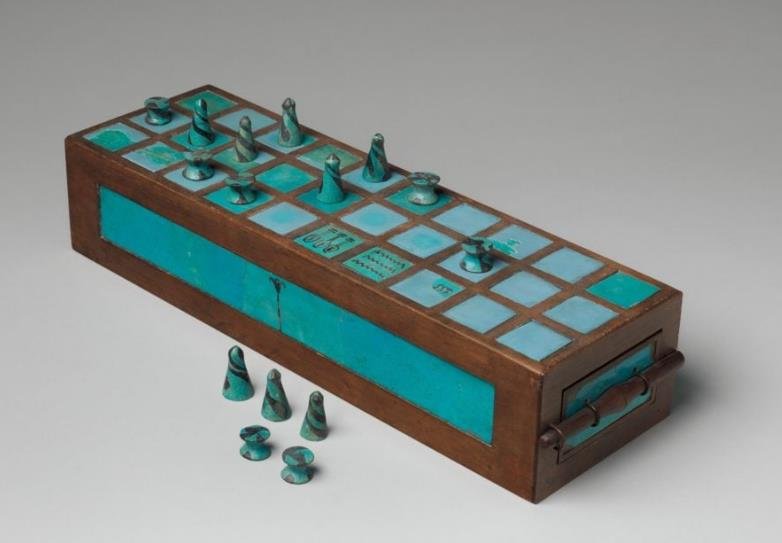Recent archaeological discoveries have unveiled surprising origins of the ancient Egyptian board game known as “Hounds and Jackals.” Previously believed to have originated in Egypt, new evidence suggests that this popular game likely has its roots in south-western Asia. This revelation sheds light on the cultural exchanges and interactions that took place over 4,000 years ago, highlighting the interconnectedness of ancient civilizations. The game, also known as “fifty-eight holes,” was widely played across Egypt, the Levant, Mesopotamia, Iran, and Anatolia, reflecting its broad appeal and significance.

Unveiling the Origins
The game of Hounds and Jackals, characterized by its distinctive board with fifty-eight holes, has long been associated with ancient Egypt. However, recent studies have traced its origins to south-western Asia. Archaeologists have discovered rock carvings of the game dating back to around 2,000 BC at various sites in modern-day Azerbaijan. These findings suggest that the game was adopted by cattle herders in the region before spreading to Egypt.
This discovery challenges the traditional understanding of the game’s origins and highlights the cultural exchanges between ancient civilizations. The presence of the game in both Asia and Egypt indicates that it served as a medium for interaction and communication among different cultures. The game’s widespread popularity suggests that it played a significant role in connecting communities and facilitating social interactions.
The game boards found in Azerbaijan are remarkably similar to those discovered in Egyptian tombs, further supporting the theory of its Asian origins. These boards feature two parallel lines of ten holes and an arc of thirty-eight holes, making a total of fifty-eight holes. The similarities in design and structure indicate a shared cultural heritage and the transmission of ideas and practices across regions.
Cultural Significance and Gameplay
Hounds and Jackals was more than just a pastime; it held cultural and social significance in ancient societies. The game was often played during social gatherings and religious ceremonies, serving as a form of entertainment and a means of fostering community bonds. The game’s rules and objectives, which involved moving pieces around the board to reach the end first, were simple yet engaging, making it accessible to people of all ages.
The game’s pieces, typically shaped like hounds and jackals, added to its appeal and symbolism. In ancient Egyptian culture, these animals were associated with protection and guidance, reflecting the game’s deeper cultural meanings. The use of animal-shaped pieces also suggests a connection to the natural world and the importance of animals in ancient societies.
The discovery of Hounds and Jackals in various regions underscores its role as a cultural bridge. The game’s popularity across different civilizations indicates that it was a shared cultural artifact, contributing to the exchange of ideas and traditions. This cultural significance is further highlighted by the game’s presence in royal tombs and its depiction in ancient art and literature.
Implications for Archaeological Research
The discovery of the Asian origins of Hounds and Jackals has significant implications for archaeological research. It challenges existing narratives about the diffusion of cultural practices and highlights the need for a more nuanced understanding of ancient interactions. The findings underscore the importance of cross-regional studies and the integration of diverse archaeological evidence.
This discovery also opens new avenues for research into the origins and spread of other ancient games and cultural practices. By examining the similarities and differences in game boards and pieces across regions, archaeologists can gain insights into the patterns of cultural exchange and the movement of people and ideas. This interdisciplinary approach can enhance our understanding of ancient civilizations and their interconnectedness.
The study of ancient games like Hounds and Jackals also provides valuable information about the daily lives and social structures of ancient societies. Games were an integral part of leisure and social activities, reflecting the values and priorities of the people who played them. By exploring the cultural contexts of these games, researchers can uncover new aspects of ancient life and enrich our knowledge of the past.
